
Gilbert de Clare, 6th Earl of Hertford, 7th Earl of Gloucester was a powerful English magnate. He was also known as "Red" Gilbert de Clare or "The Red Earl", probably because of his hair colour or fiery temper in battle. He held the Lordship of Glamorgan which was one of the most powerful and wealthy of the Welsh Marcher Lordships as well as over 200 English manors.

Roger Mortimer, 1st Baron Mortimer of Wigmore, of Wigmore Castle in Herefordshire, was a marcher lord who was a loyal ally of King Henry III of England and at times an enemy, at times an ally, of Llywelyn ap Gruffudd, Prince of Wales.

Baron le Despencer is a title that has been created several times by writ in the Peerage of England.
Hugh Bigod was Justiciar of England from 1258 to 1260. He was a younger son of Hugh Bigod, 3rd Earl of Norfolk.
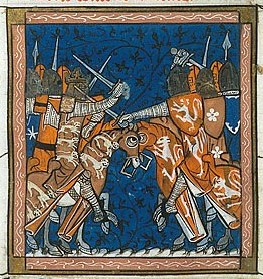
The Second Barons' War (1264–1267) was a civil war in England between the forces of barons led by Simon de Montfort against the royalist forces of King Henry III, led initially by the king himself and later by his son, the future King Edward I. The barons sought to force the king to rule with a council of barons, rather than through his favourites. The war also involved a series of massacres of Jews by de Montfort's supporters, including his sons Henry and Simon, in attacks aimed at seizing and destroying evidence of baronial debts. To bolster the initial success of his baronial regime, de Montfort sought to broaden the social foundations of parliament by extending the franchise to the commons for the first time. However, after a rule of just over a year, de Montfort was killed by forces loyal to the king at the Battle of Evesham.
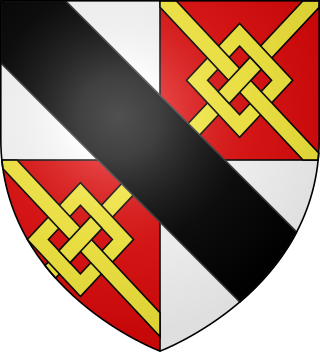
Hugh le Despenser, sometimes referred to as "the Elder Despenser", was for a time the chief adviser to King Edward II of England. He was created a baron in 1295 and Earl of Winchester in 1322. One day after being captured by forces loyal to Sir Roger Mortimer and Edward's wife, Queen Isabella, who were leading a rebellion against Edward, he was hanged and then beheaded.

Hugh Despenser, 1st Baron Despenser, also referred to as "the Younger Despenser", was the son and heir of Hugh Despenser, Earl of Winchester, and his wife Isabel Beauchamp, daughter of William Beauchamp, 9th Earl of Warwick. He rose to national prominence as royal chamberlain and a favourite of Edward II of England. Despenser made many enemies amongst the nobility of England. After the overthrow of Edward, he was eventually charged with high treason and ultimately hanged, drawn and quartered.

Eleanor de Clare, suo jure 6th Lady of Glamorgan was a powerful Anglo-Welsh noblewoman who married Hugh Despenser the Younger, the future favourite of Edward II of England, and was a granddaughter of Edward I of England. With her sisters, Elizabeth de Clare and Margaret de Clare, she inherited her father's estates after the death of her brother, Gilbert de Clare, 8th Earl of Gloucester, 7th Earl of Hereford at the Battle of Bannockburn in 1314. She was born in 1292 at Caerphilly Castle in Glamorgan, Wales and was the eldest daughter of Gilbert de Clare, 6th Earl of Hertford, 7th Earl of Gloucester, 5th Lord of Glamorgan and Princess Joan of Acre.
Events from the 1260s in England.
Philip Basset was the Justiciar of England.
Maud de Braose, Baroness Mortimer of Wigmore was a noble heiress, and one of the most important, being a member of the powerful de Braose family which held many lordships and domains in the Welsh Marches. She was the wife of Roger Mortimer, 1st Baron Mortimer of Wigmore, a celebrated soldier and Marcher baron.
Despencer or Despenser is an occupational surname referring to the medieval court office of steward, most commonly associated with Norman-English barons of the 13th- and 14th-centuries and their descendants. Notable people with this surname include:
Sir Hugh de Courtenay (1251–1292) was the son and heir of John de Courtenay, feudal baron of Okehampton, Devon, by Isabel de Vere, daughter of Hugh de Vere, 4th Earl of Oxford. His son inherited the earldom of Devon.
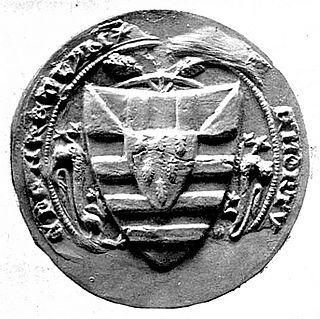
Roger Mortimer, 1st Baron Mortimer of Chirk was a 14th-century Marcher lord, notable for his opposition to Edward II of England during the Despenser War.
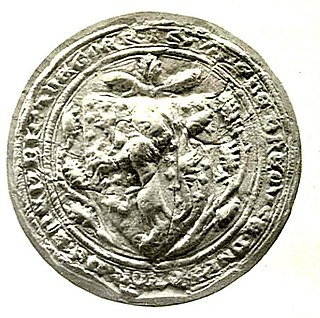
William de Braose was the second Baron Braose, as well as Lord of Gower and Lord of Bramber. He was held as a hostage after being captured in 1264 during the Second Barons' War and records of some of his childhood expenses survive from his time as a hostage. He first entered royal service in 1286 and, in 1291, he succeeded his father as baron. He continued in royal military service, serving in Scotland as well as in Wales. Protracted disputes over his lands embroiled him throughout his life and at the end of his life helped spark a revolt against King Edward II of England's favourites, the Despensers. He married twice, and his heirs were his daughter Aline and his grandson John de Bohun.
Ralph Basset, was an English baronial leader.

Ralph Basset, 1st Baron Basset of Drayton Bassett in Staffordshire, was an English nobleman who fought in both the Anglo-French War and in the First War of Scottish Independence. He was the son of one of Simon de Montfort's barons, Ralph Basset (d.1265), and Margaret de Somery. In 1291, he was made Governor of Edinburgh Castle. He was created 1st Baron Basset of Drayton in 1295.
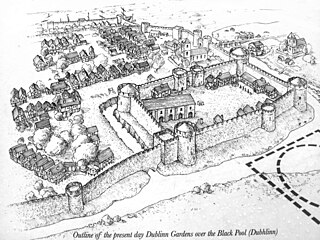
Sir James de Audley [Knight], Justiciar of Ireland, was an English baron and magnate. He became Chief governor of Ireland, seated at Dublin Castle, and the son-in-law of crusader William Longespée the Younger.

There have been four different baronies held by the Marmion family, two feudal baronies, one purported barony created by Simon de Montfort and one barony by writ.
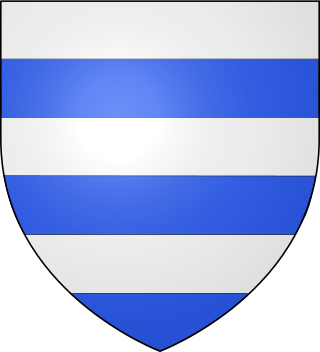
Richard Grey, 2nd Baron Grey of Codnor, of Codnor Castle, was an English soldier and diplomat.














